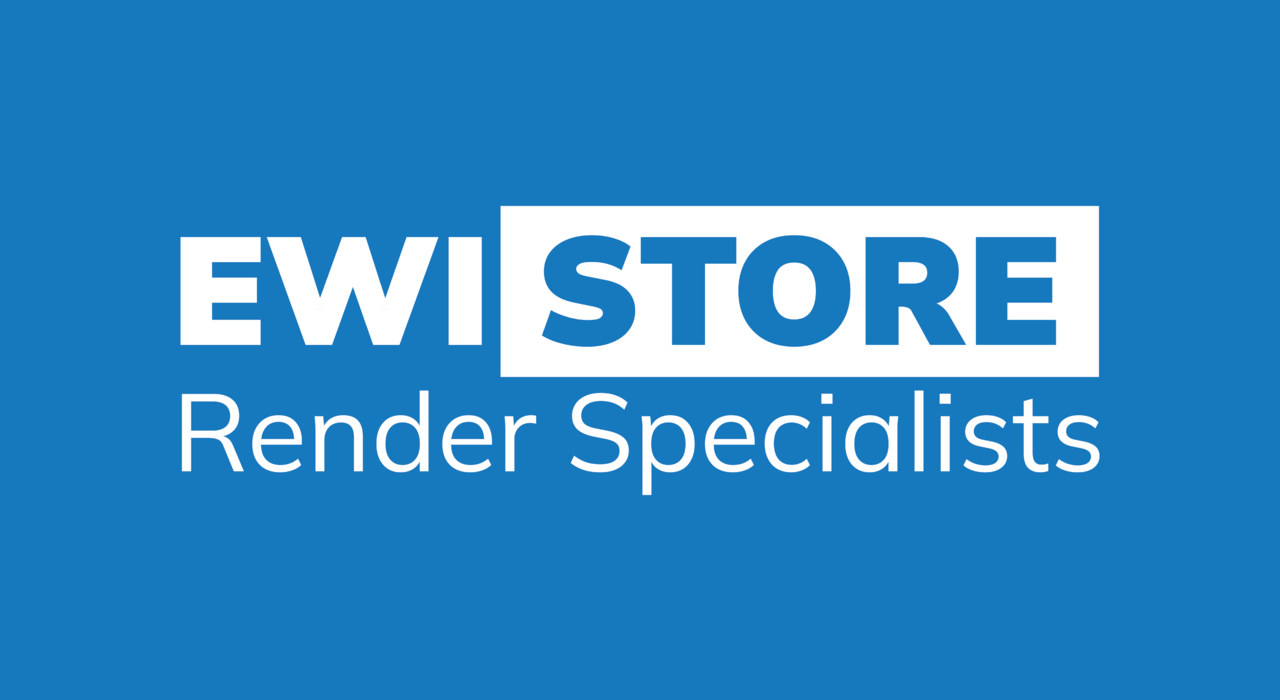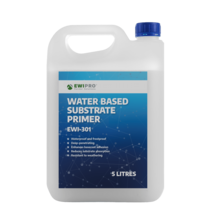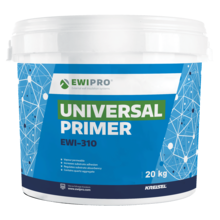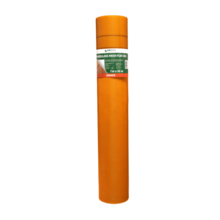
Applying monocouche scratch render onto concrete, clay, block, and brick substrate is relatively straightforward. However, you will require a specific set of materials to ensure it is completed correctly.
The Monocouche scratch render Buyer’s guide will help you select the best materials to complete your project!
1. Priming the Substrate
One of the most effective ways to ensure your monocouche render system lasts is to prime the substrate properly. When installing a render system onto a very smooth substrate, we suggest using the EWI-310 Universal Primer. This formula contains aggregates to create a rough surface for adhesion. EWI-310’s coverage is 15L/60m2, with a drying time of 4 hours per coat.
When installing a render system onto a brickwork substrate, we highly recommend using the EWI-301 Water Based Primer. Alternatively, you can use EWI-302 Deep Penetrating Primer when installing onto Block substrate. These should be applied using either a roller or a brush. EWI-301 and EWI-302 coverage rate is 5L/20m2, with a drying time of 4 hours per coat. Both help to limit suction and create a protection against groundwork absorbency and create adhesion for the Monocouche render.
2. Mixing the Monocouche Render
EWI-090 Monocouche Render is a dry mixture, mix with clean, potable water to activate the ingredients. Pour the 25kg dry mix bag into approx. 4.5-5 litres of water. Mix thoroughly for 2 minutes, leave to stand, and then re-mix.
3. Applying the Monocouche Render and embedding the Mesh
When applying the EWI-090 Monocouche Render onto the primed substrate, you should apply it in two passes. Firstly, to a total depth of 10mm, avoid rendering monocouche below the DPC or within 150mm of ground level.
Apply the first pass with a stainless steel trowel or spray pump. Embed fibreglass mesh in the first pass, then use a scarifier to create a mechanical key.
At EWI store, we offer two high-strength meshes to suit your project’s needs. Both meshes are coated with acrylic acid copolymer liquid for a long-lasting effect. Below is a breakdown of each mesh’s capabilities:
1) Orange Fibreglass Mesh: For guaranteed strength and flexibility. This mesh is water resistant
and protects against alkali damage and aging. 1 x 50m2 roll covers 42.5m2 when overlapped.
2) Panzer Fibreglass Mesh: Our strongest mesh available guarantees a premium level of impact
and crack resistance. Provides excellent protection against the elements. One 25m2 roll covers 22.5 m2 when overlapped.
4. Applying the second pass
Following the mesh application, apply the second pass of monocouche render to a thickness of 8mm. Typically this is applied the next day. Once the monocouche render has nearly dried, it should be scratched back 2mm to give the final finish and a thickness of 6mm. Drying time varies depending on weather conditions. The total thickness of the finished monocouche render is approximately 16mm (10mm first pass and 6mm on the second pass).
5. Render Protection
Most people will finish with their Monocouche application there. However, there is another step you can complete to protect the render, ensuring a long-lasting finish.
Apply a coat of EWI-086 Render Guard to protect the render from elements, it creates a breathable, protective barrier preventing damage caused by rainwater and other conditions. Also, creating a vapor-permeable layer reducing the absorbency of the surface.
When applying EWI-086, you should clear the area of dust, soot, grease and anything else that might reduce the contact between the product and the render.
The product comes ready to use. Do not dilute the product with water or mix with other materials. Mix thoroughly before use.
Apply Nano Drex Protect when the temperature is between 5°C and 25°C with a paintbrush or roller.
Available in 1 and 5 Litre.
All products mentioned are available in the EWI Store.
If you have any further questions, our Sales team will be happy to assist on 0203 034 00 22.




